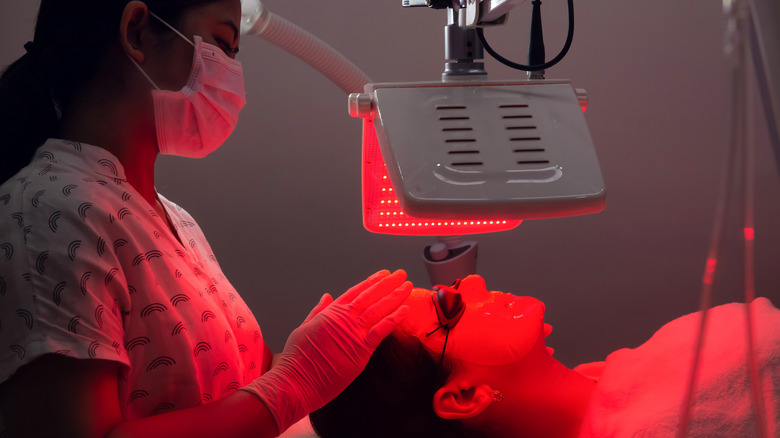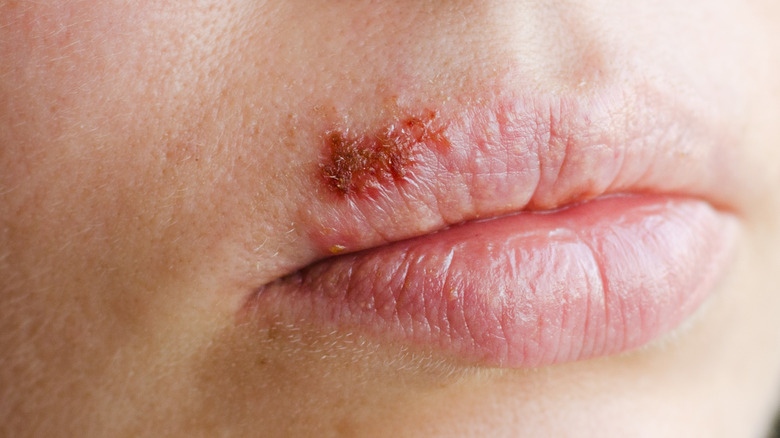Does Red Light Therapy Really Help With Cold Sores?
Are you thinking about trying red light therapy for cold sores? First, make sure you know what to expect. LED therapy is widely used in the beauty industry. "It works by emitting infrared lights (causing heat) in different wavelengths/spectrums, which have different skincare benefits," Dr. Dendy Engelman explained to Byrdie. Some types of LED light can reduce inflammation and improve blood flow, while others may help prevent acne breakouts.
"The red infrared lights are used for fine lines and wrinkles. The blue lights are used to improve acne and prevent breakouts. Also, blue light penetrates deep to [treat] cystic acne," plastic surgeon Sheila Nazarian told Byrdie. Meanwhile, white light reduces inflammation of the skin. Dr. Engelman added that low-level laser therapy, or red light therapy, may also cause positive changes in the skin's cellular structure and reduce pro-inflammatory cytokines, "which cause inflammation and play a role in chronic acne."
Moreover, red light therapy boosts collagen production and rejuvenates the skin, leading to a more youthful appearance, according to Photomedicine and Laser Surgery. But how effective is it for cold sores?
Red light therapy may speed up the healing of cold sores
Johns Hopkins Medicine reports that 50% to 80% of American adults have oral herpes, or cold sores. These small blisters are actually a viral infection caused by the herpes virus type 1 (HSV-1). In some cases, they may be due to the herpes virus type 2 (HSV-2), per the Mayo Clinic. Unfortunately, there is no permanent cure for this condition. Once infected, you'll have the virus in your system for life. Stress, injuries, prolonged exposure to sunlight, and other factors can trigger flare-ups, leading to the formation of new blisters around the mouth, according to Johns Hopkins Medicine.
While there is no cure, using red light therapy for cold sores may accelerate healing and decrease pain without causing adverse reactions, as noted by the Philadelphia College of Osteopathic Medicine. A 2013 study published in Clinical and Experimental Dermatology found that low-level light therapy reduced healing time by 48 hours compared to the placebo treatment. In another study, patients who received treatment with red light therapy had fewer flare-ups over a five-year period, per Photomedicine and Laser Surgery. Overall, scientists believe that red light therapy stimulates the immune response, leading to faster healing.
Keep in mind that in-office treatments are often more effective than LED light masks and other devices designed for home use, according to Dr. Dendy Engelman in her interview with Byrdie. If you decide to give red light therapy a try to help heal your cold sores, be sure to discuss your options with a dermatologist.

